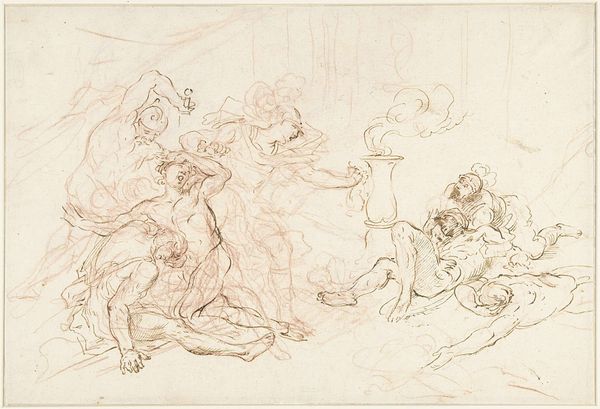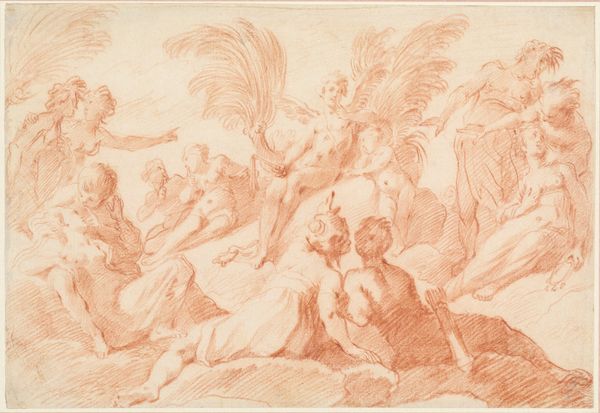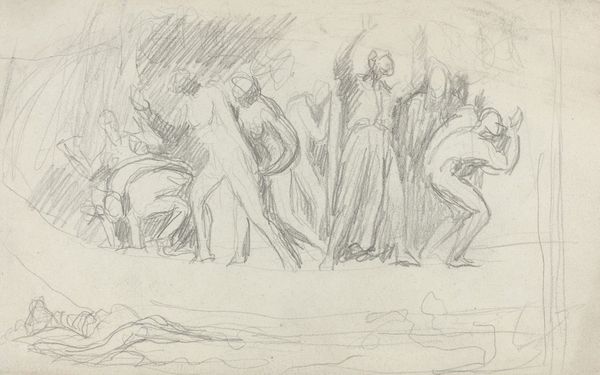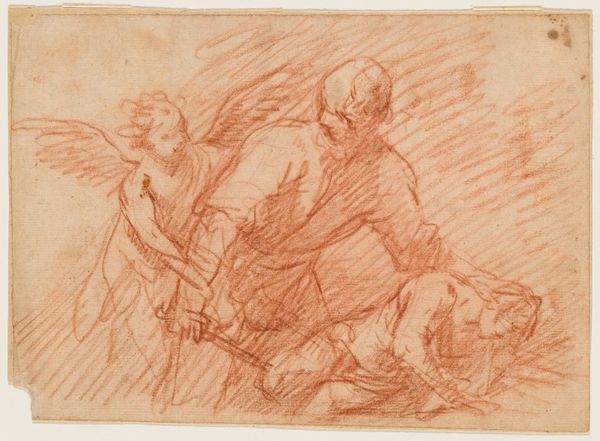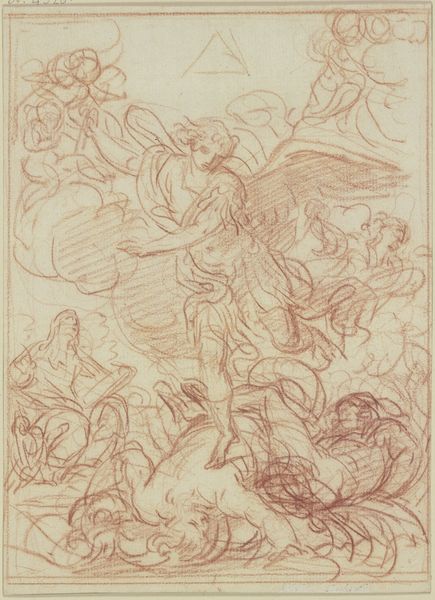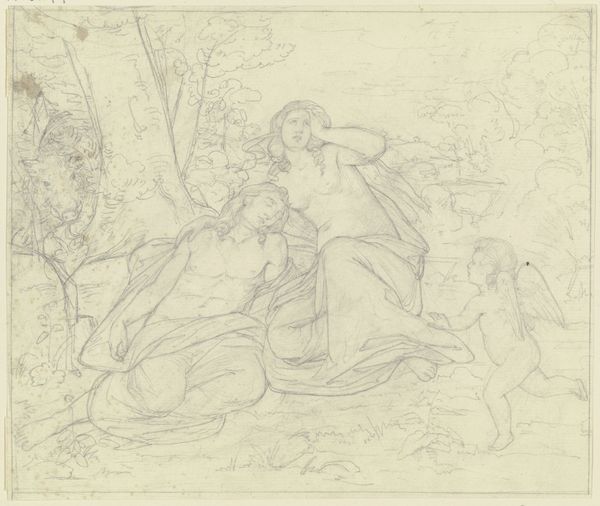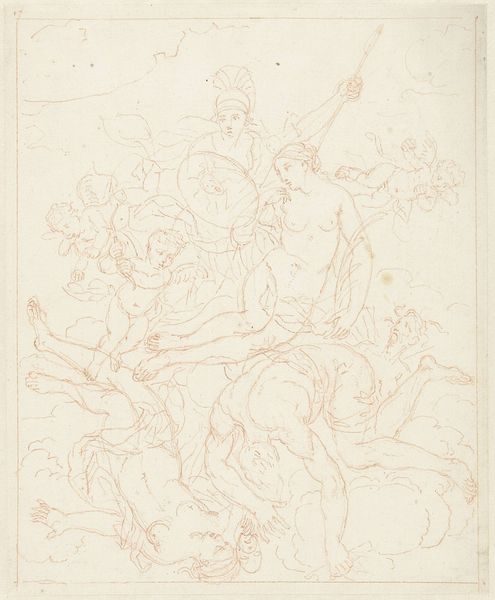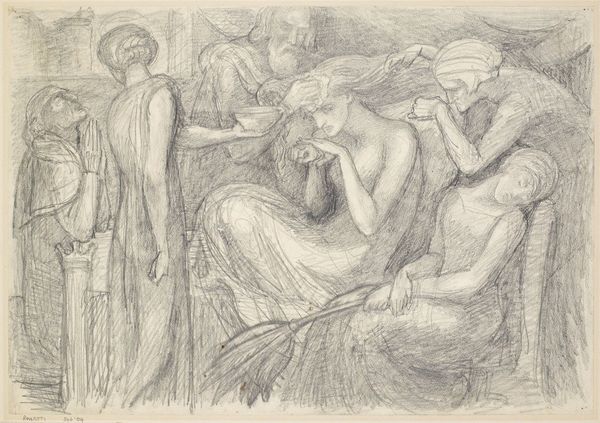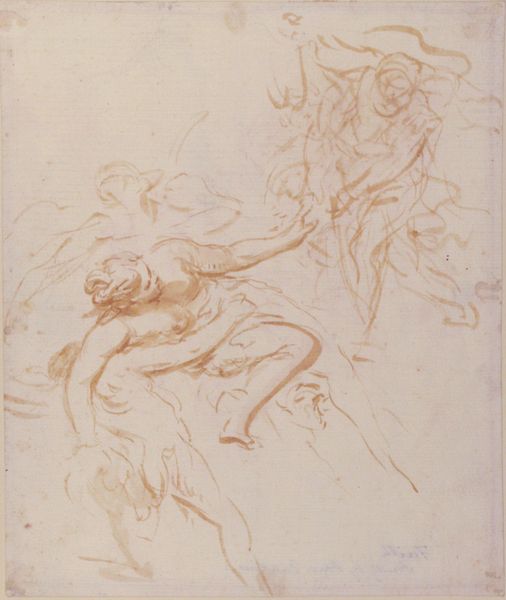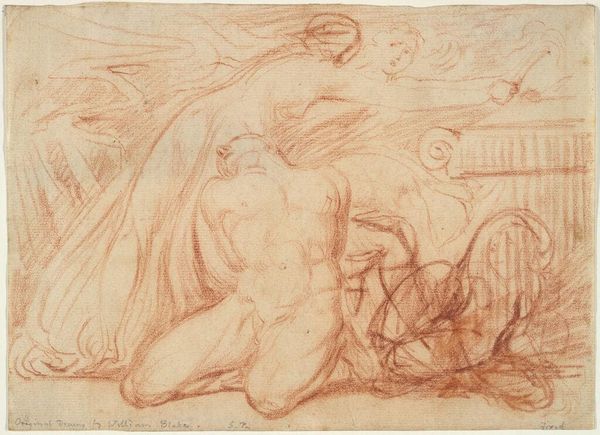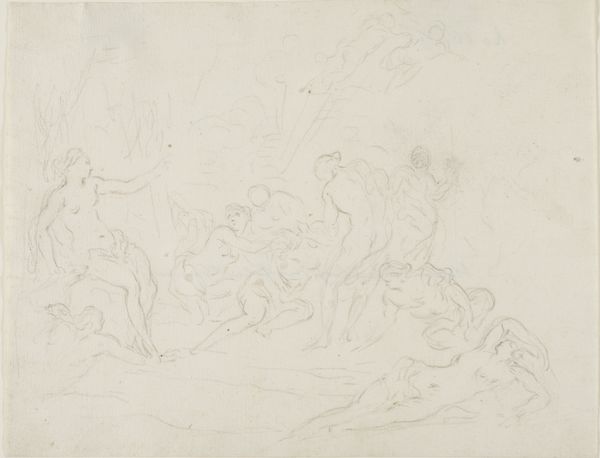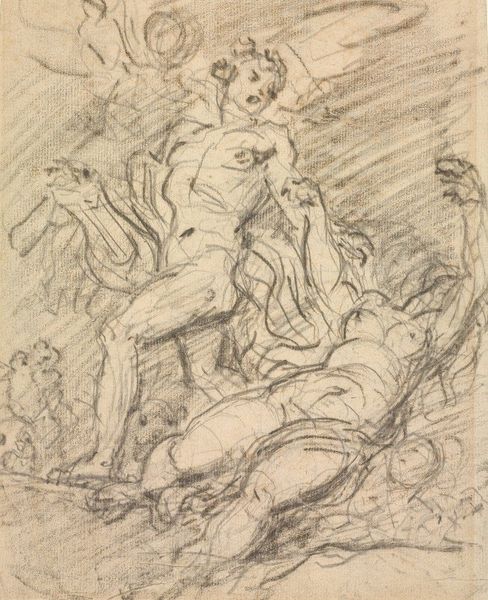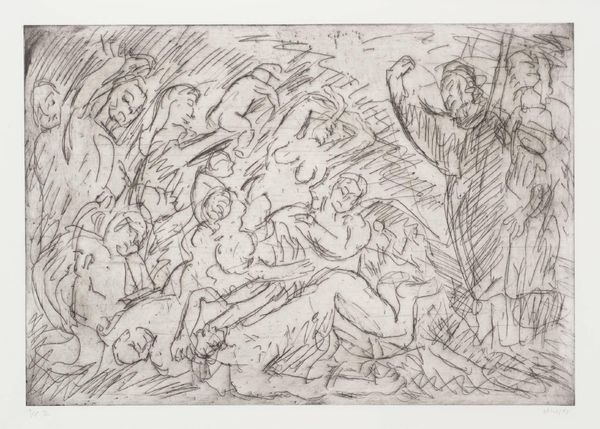
Copyright: Public Domain: Artvee
Editor: This is James Ensor's "Christ Drives the Devil Out of the Body of a Possessed Person," created in 1921 using dry media like charcoal and ink. There's a chaotic feel to it; the figures are gestural, almost frantic. What narratives or themes do you see emerging from this composition? Curator: Ensor's work is always a challenge. It's tempting to simply see religious allegory here, but let's dig a little deeper. What power dynamics are at play? Who is being "saved," and from what? And whose narrative dominates? Editor: So, beyond the surface, you’re saying there could be other forces or commentaries involved? Curator: Exactly. Consider the historical context: post-World War I Europe. Societal anxieties were high. The "possessed" figure, in this lens, could represent societal trauma, perhaps the suppression and marginalization of those deemed "other." Christ, then, embodies a certain form of authority intervening – but is it truly liberation, or another form of control? Editor: That makes me think about who defines “possession” in the first place, and whose voices are silenced in that definition. It's not just about individual salvation, is it? Curator: Precisely. The “devil” might be a metaphor for societal ills, like inequality, or oppressive ideologies. Ensor pushes us to consider how power structures operate and who benefits from these narratives of "rescue." He also is clearly making reference to earlier artists of the Renaissance, and this places him within that legacy but also comments on the legacy through his modernist language of Expressionism and Symbolism. What about you? Editor: That's helpful; now I can appreciate this is not a traditional religious scene. Thinking of this piece as a commentary on the social and political turmoil of Ensor’s time gives it so much more depth. Curator: Absolutely. Ensor is inviting us to critique not just the religious narratives themselves but also the underlying systems of power that shape our understanding of those narratives. It goes beyond religious redemption, offering a powerful statement about society, control, and resistance.
Comments
No comments
Be the first to comment and join the conversation on the ultimate creative platform.
